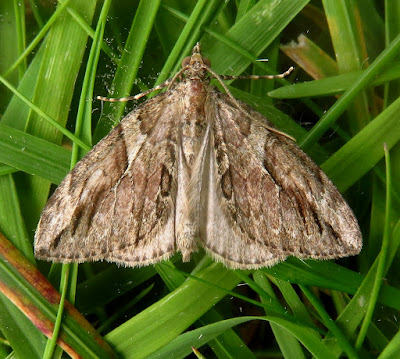In recent years the brown argus has made an appearance each summer in the garden. It is usually seen in more grassy habitats such as along the seawall or at on the grassland site of Feldy View.
A handful of gatekeepers have been resident in the garden in the second half of July, here a pair mating.
One or two meadow browns have been regular too, this one feeding on some lavender.
The ringlet was seen on several dates but not seen to settle down to feed. Large whites, small whites and the green-veined white have all been regular visitors especially during the second half of the month. As the buddleia came into flower in the middle of July, several peacocks, red admiral, comma appeared while one painted lady was seen on the 29th.
The only large skipper seen in the garden was on the 1st July.
The ringlet was seen on several dates but not seen to settle down to feed. Large whites, small whites and the green-veined white have all been regular visitors especially during the second half of the month. As the buddleia came into flower in the middle of July, several peacocks, red admiral, comma appeared while one painted lady was seen on the 29th.
The only large skipper seen in the garden was on the 1st July.
The lawn had three cuts in the spring before it was left to grow from early June onwards. This resulted in a nice growth of flowers such as catsear and smooth hawksbeard.
The bees enjoyed the large patches of flowering white clover, also some self-heal flowers to visit too.
The stock dove male has been singing from the tall cedar tree and seemed to have taken a fancy to the red squirrel box.The stock dove was seen at the start of the month feeding under the bird feeders.
After a busy period building several nests, the wrens settled into a nestbox beside the house.
The wren parents were busy taking food back to feed the hungry chicks. Sadly the box was predated, maybe the noisy chicks gave the nest location away.
After a very busy spring with lots of red squirrel activity in the garden, visits dwindled through July. This male was photographed on 3rd July


























































